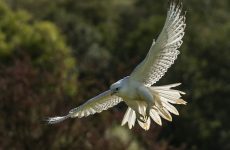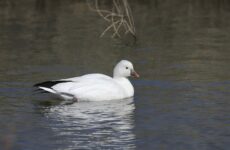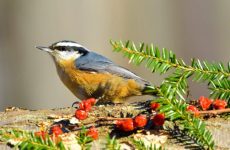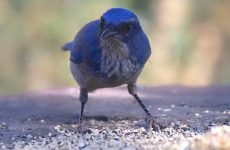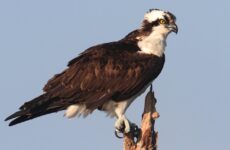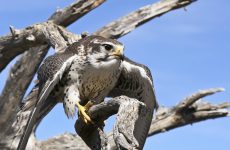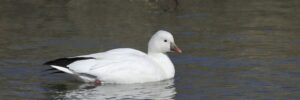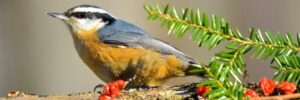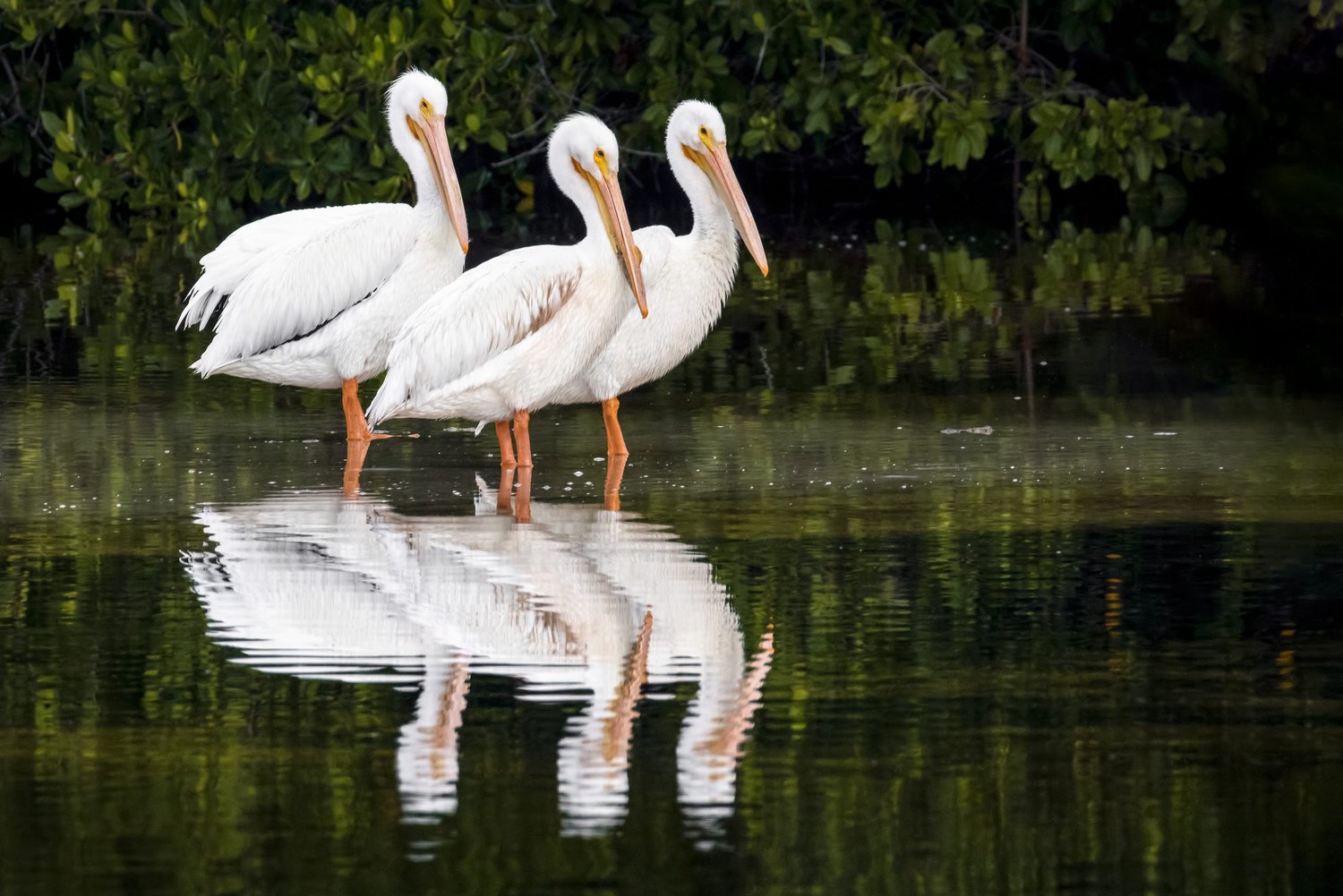
Only one of the two species of Pelican you can find in North America can be spotted in Manitoba. This is the American White Pelican, and they can be spotted here in summer.
Pelicans are one of the world’s largest birds and one of the most recognizable with their huge bills, throat pouch, and feet. Although they are very large, they are very light, and they have air pockets in their skeleton and skin, which help them to float, and their long wings help them to soar when flying.
There are eight species of pelicans in the world, and two of them live in North America. These are the American White Pelican and Brown Pelicans.
During the breeding season, pelicans’ facial skin and their throats and bills become brighter colored and some grow extra parts on their bills.
Pelicans breed in colonies of up to 50,000 birds, and depending on the species, and they may either be ground-nesting or tree nesting. After about 25 days in the nest, the young will gather in ‘creches’ of up to 100 young birds, and amazingly the parents will recognize their own chick and only feed them.
Although pelicans prey on other animals, they are not considered birds of prey as these birds only include raptors. Pelicans mainly eat fish, but they will also eat crabs, frogs, snakes, mammals, birds, and insects.
They use their throat pouch to catch fish and drain the water own before swallowing. Young pelicans will also feed directly from their parents’ throat pouch.
This guide will help you identify the types of Pelicans spotted in Manitoba according to avibase and uses data collected from bird watchers on ebird to give real information about when these birds can be spotted.
Species Of Pelican In Manitoba:
American White Pelican
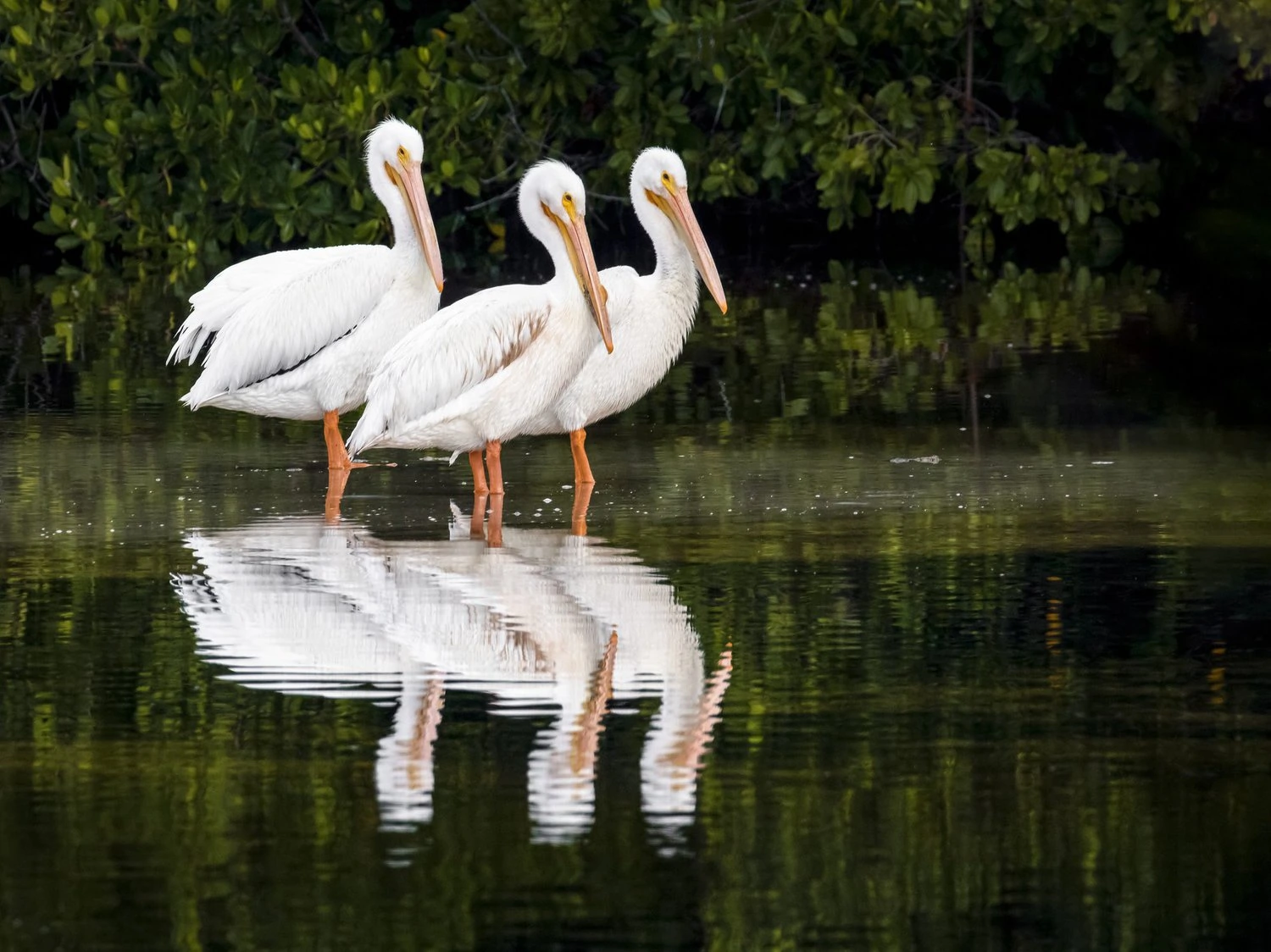
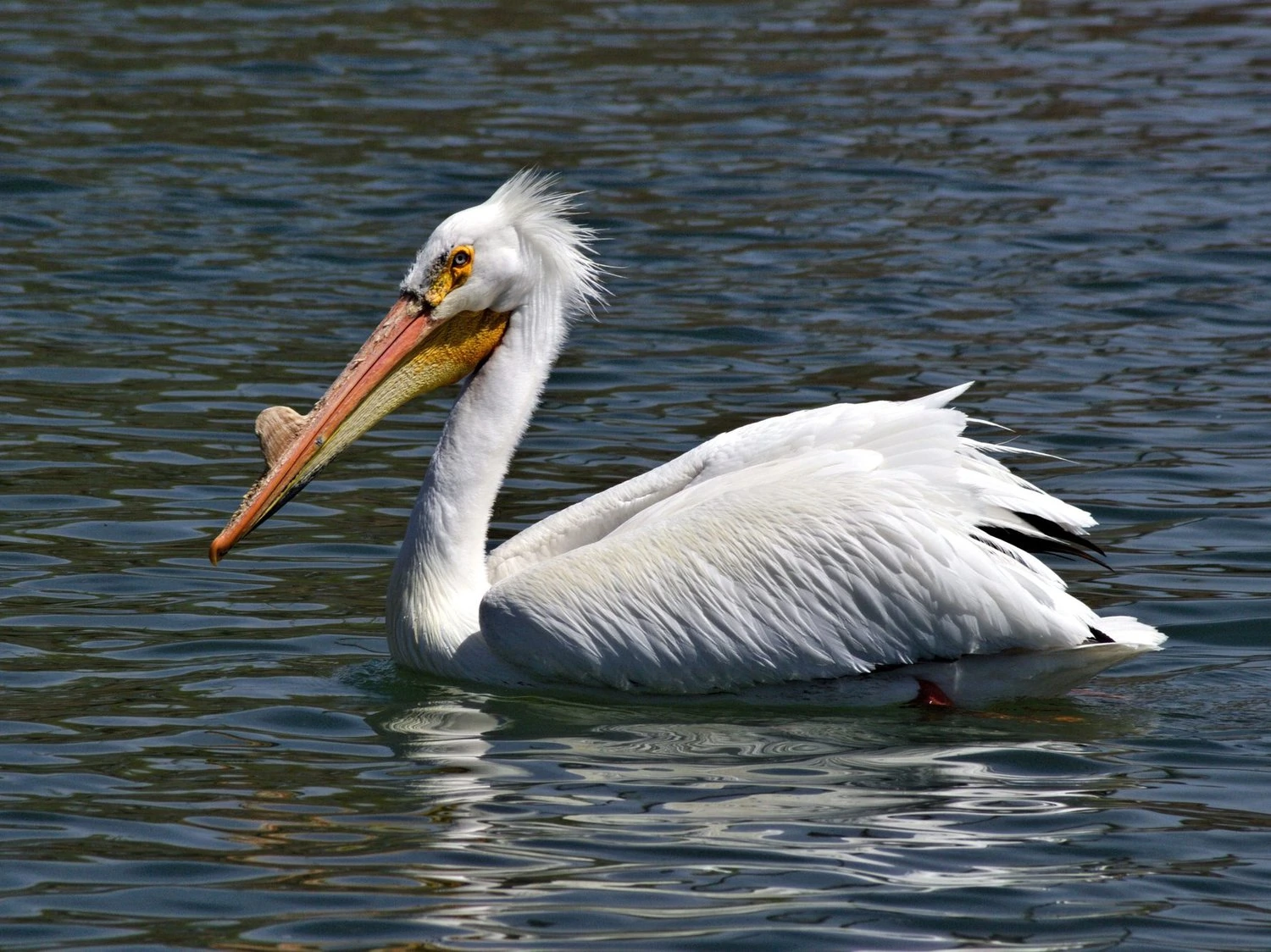
American White Pelicans are usually found in Manitoba during the breeding season from April to November, but a few can be spotted here all year. They are recorded in 11% of summer checklists submitted by bird watchers for the province.
American White Pelicans are large soaring birds that have the second largest average wingspan of any North American bird.
Non-breeding adult American White Pelicans are white all over, except for black flight feathers that are only visible when in flight or when the wings are spread. They have bluish-gray eyes and yellow facial skin around their eyes. They have pale orange bills, pouches, and feet. Juveniles have light gray feathers with darker brown napes.
Breeding adult American White Pelicans have distinctly different coloring from non-breeding adults. They grow a yellow plate on their upper bills, like a horn. They still have the all-white bodies, but around their eyes, their bills, and their legs and feet become brighter orange.
American White Pelicans have several molting changes, known as eclipse. In the Spring, they have a visible yellowish patch on their breast and chest. In the summer, blackish feathers appear on their heads.
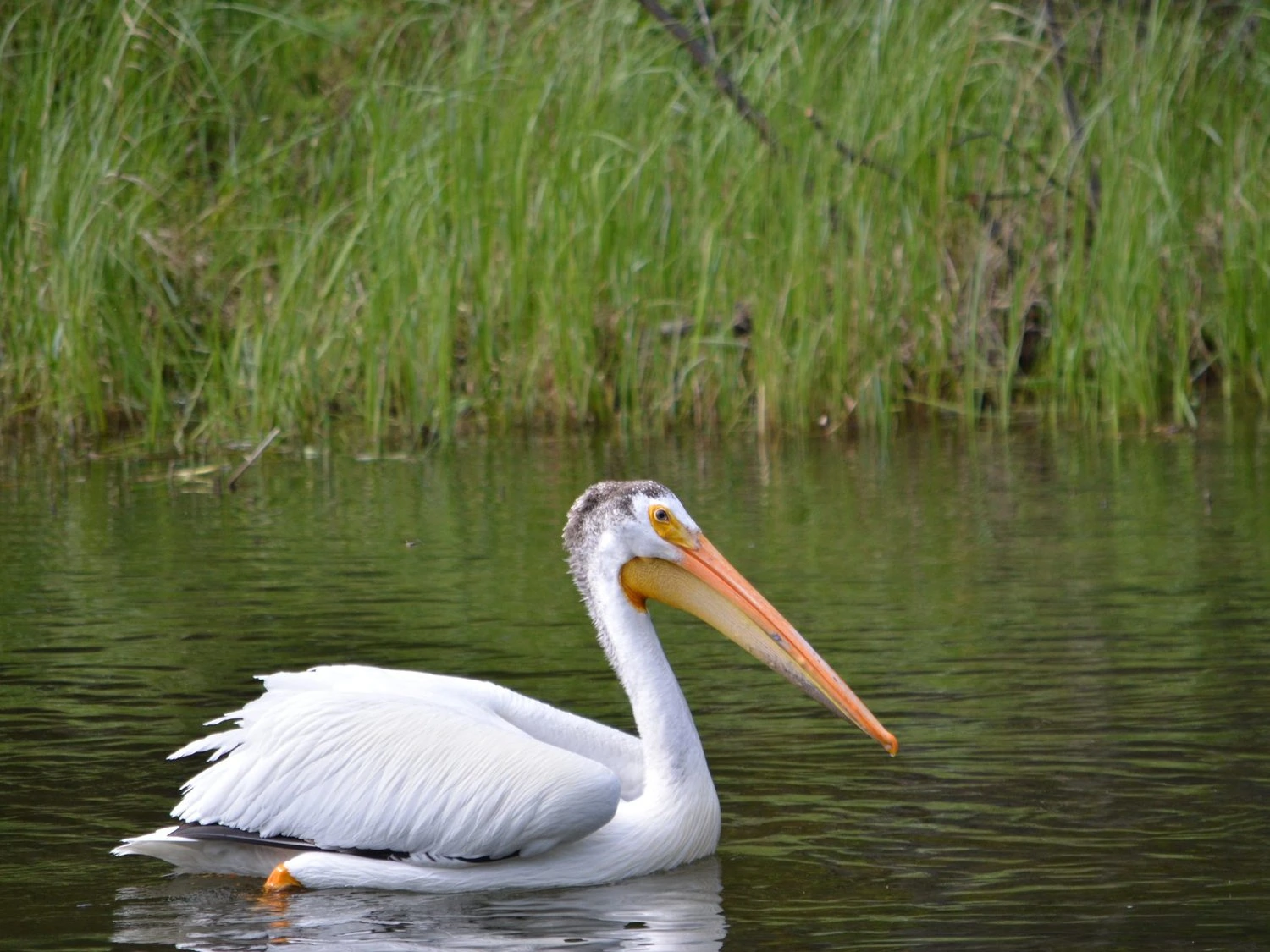
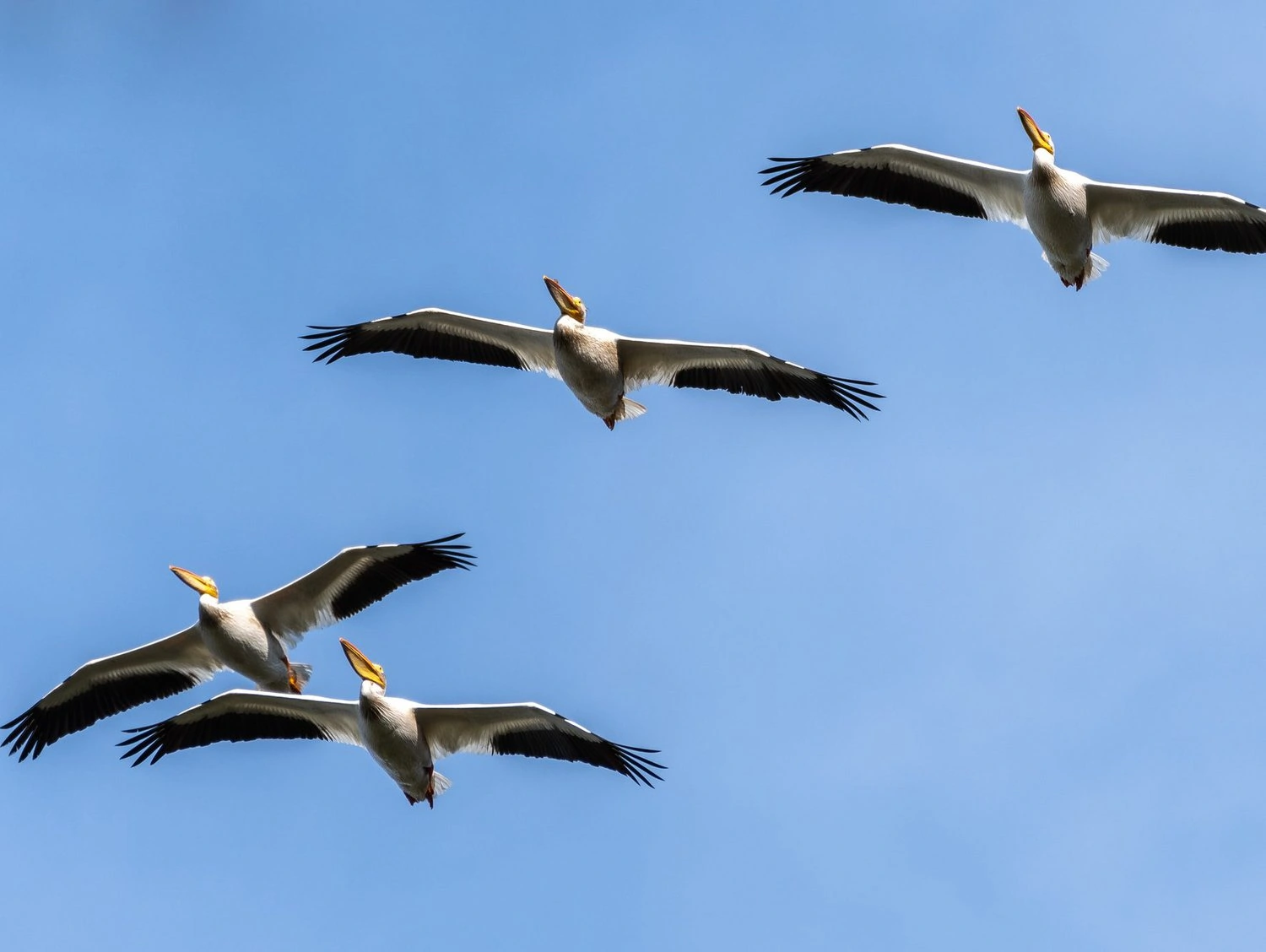
- Pelecanus erythrorhynchos
- Length: 60 – 63 in (152 – 160 cm)
- Weight: 246.4 oz (6983 g)
- Wingspan: 96 – 110 in (244 – 279 cm)
American White Pelicans breed in remote lakes inland in North America before spending the winter on the southern Pacific Coast of the US, the Gulf of Mexico, Mexico, and Central America. They can be spotted during migration in western and central US states.
You can find American White Pelicans in shallow freshwater lakes, wetlands, and edges of lakes and rivers. In the winter, you can find them in coastal bays, inlets, and estuaries where they forage in shallow water and rest on sandbars.
American White Pelicans mostly eat fish. They swim on the surface and capture their prey through their huge bills. They also forage as a group with other birds and conduct an almost strategic, coordinated effort to drive fish toward shore where they can efficiently scoop them up.
They are also opportunistic feeders that go where the food is. They may travel great distances in search of better feeding grounds. They may also eat crayfish, amphibians, and salamanders. They are also known to steal fish from other birds from the surface of the water.
American White Pelican calls: These birds are usually silent or only make a few grunts. However, the young can be noisy in the large colonies begging for food.
Nests of the American White Pelican are simple, shallow depressions on the ground. Twigs, sticks, reeds, and other materials are added on top of the soil as protection for the eggs.
The female then lays one to two eggs which both parents incubate together for up to thirty-six days. Unfortunately, only one chick per nest survives due to siblicide (when one sibling kills the other).
Fun Facts: The long and huge bill of the American White Pelican is capable of holding three gallons of water. When it scoops up fish from the sea, it tilts its bill down to drain the water so it can then swallow the fish that’s left inside its throat sac.

